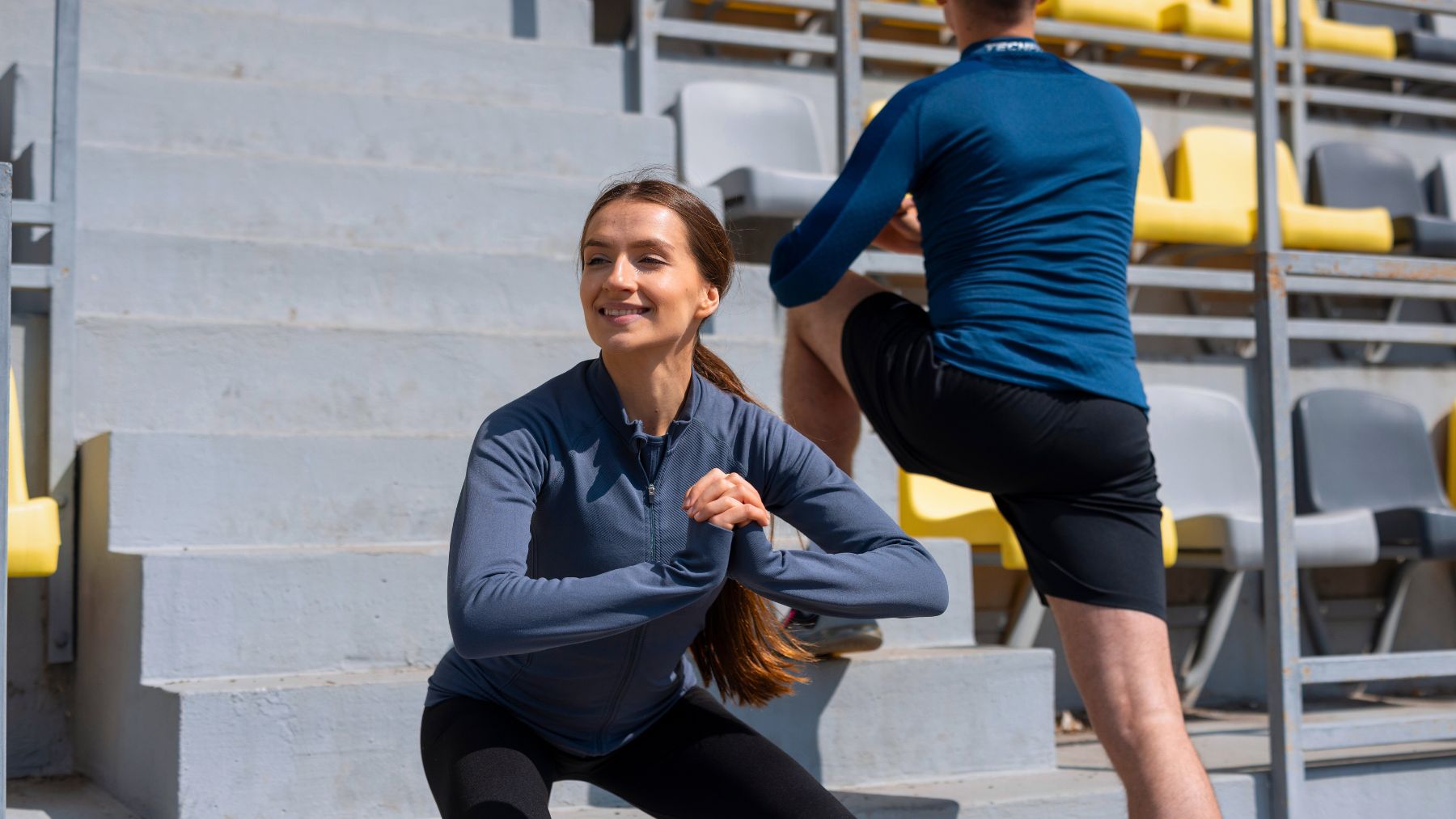Heavy weights are not the only option to get stronger after 50. In fact, some of the best moves for building muscle, protecting joints, and improving balance can be done right at home with nothing more than your own bodyweight.
Research shows that bodyweight and functional exercises can help older adults preserve muscle, improve mobility, and reduce fall risk. In this article, we’ll cover four simple moves—squats, wall pushups, step-ups, and glute bridges—that target major muscle groups, strengthen your core, and support everyday activities.
The best at-home exercises to build muscle after 50
Maintaining strength past midlife involves using movements that challenge large muscle groups while being gentle enough on the joints to practice regularly. The four exercises below fit the bill and can be adapted to any fitness level.
1. Step-ups
Step-ups mimic climbing stairs. All you need is a sturdy step, platform, or bench. Start by stepping up with one foot, pressing through the heel, then bringing the other foot up to meet it. Step back down with control and repeat, alternating legs.
This move strengthens the quads, glutes, and hamstrings while also improving balance and coordination. By training each leg separately, you can help correct muscle imbalances and make everyday activities like walking and stair climbing feel easier. Begin with a lower step height and gradually increase as you get stronger.
2. Wall pushups
Traditional pushups can be tough on wrists and shoulders, but wall pushups are a safe, joint-friendly alternative. Stand facing a wall, place your hands slightly wider than shoulder-width, and step your feet back until your body forms a straight line. Lower your chest toward the wall by bending your elbows, then push back to the starting position.
Wall pushups target the chest, shoulders, and arms without requiring you to get on the floor. They can be adjusted for difficulty by moving your feet farther from the wall or lowering your hands to a counter for added resistance. Strong upper body muscles are essential for daily tasks like carrying groceries or lifting heavy objects.
3. Bodyweight squats
Squats are one of the most effective lower-body exercises because they engage the quads, glutes, hamstrings, and core at the same time. Stand with your feet shoulder-width apart, brace your core, and lower your hips back and down as if sitting into a chair. Keep your chest upright, go as low as feels comfortable, then push through your heels to return to standing.
For added safety, place a chair behind you for support or depth guidance. Squats not only strengthen the legs but also make it easier to get in and out of chairs, climb stairs, and maintain independence as you age.
4. Glute bridges
This exercise strengthens the posterior chain—your glutes, hamstrings, and lower back—which is critical for posture and walking mechanics. Lie on your back with knees bent and feet flat on the floor, hip-width apart. Press through your heels to lift your hips until your body forms a straight line from shoulders to knees. Squeeze your glutes at the top before lowering slowly.
Glute bridges are effective for improving core stability and reducing lower back strain. They can also help counteract the effects of prolonged sitting, which often weakens the hips and glutes. Adding a pillow or block between your knees can improve alignment and muscle activation.

